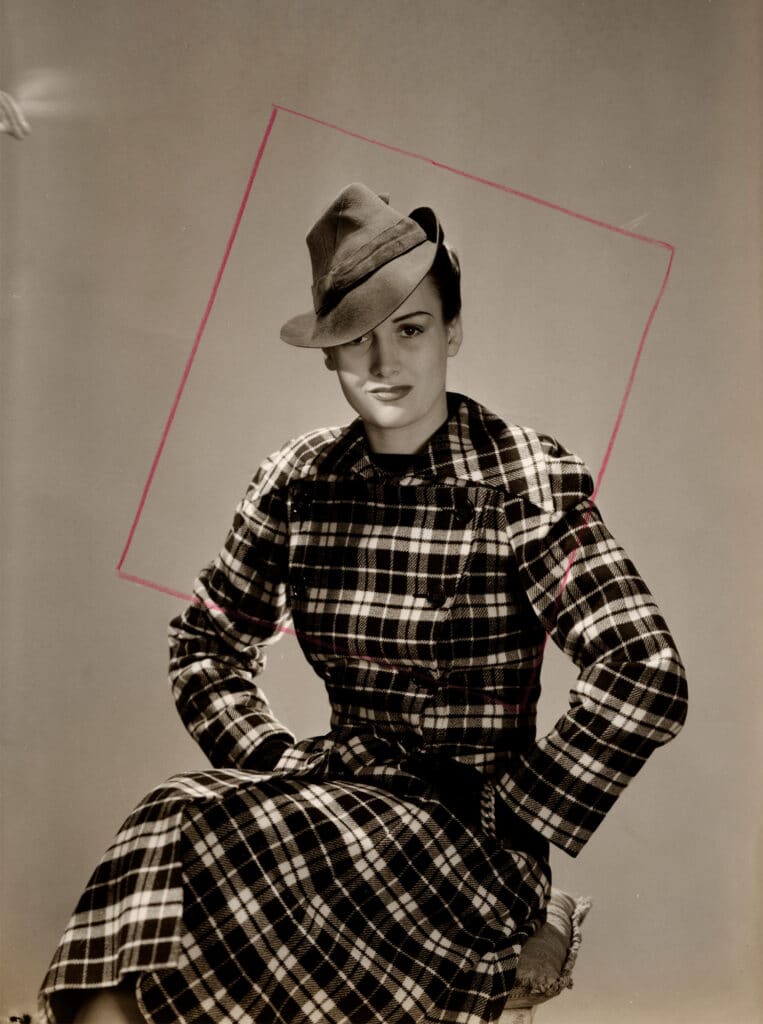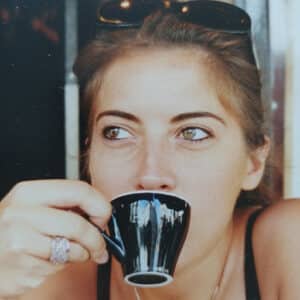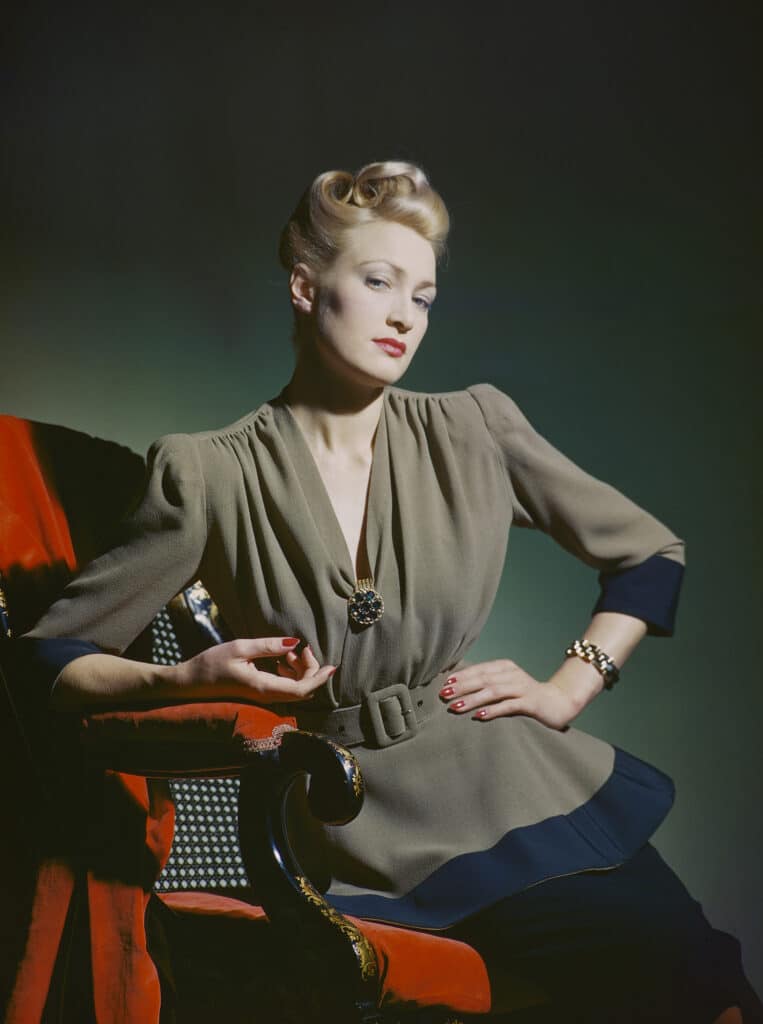
From New York’s high fashion to the Surrealists’ Paris, from the soaring romanticism of Cairo to the Blitz of London, from the defeated Munich to the liberation of the concentration camps, the photographs of Elizabeth “Lee” Miller (1907–1977) trace the multiple careers of a woman who chose to live her life according to her own vision and principles.
It is not surprising Hollywood is producing a biopic, starring Kate Winslet, about this leading twentieth-century figure, who was in turn a model, photographer, and war reporter. The Arles exhibition highlights the dual nature of Lee Miller’s work between 1932 and 1945, when she pooled all her resources to create timeless images.
Lee Miller, before and behind the camera
Lee Miller possesses sculptural beauty, an unfathomable gaze, the aura of a sylph, and steely determination. A Poughkeepsie native, she lived multiple lives scarred by trauma. Her childhood was brutal: she was raped at the age of seven by a family friend. Her adolescence was fractured: she was made to pose nude before her father’s camera.
Yet she was able to overcome the emotional turmoil. She was discovered by Condé Nast and was offered the cover of Vogue US; she worked and lived with Man Ray; was painted by Picasso and sculpted by Cocteau; and the list goes on.
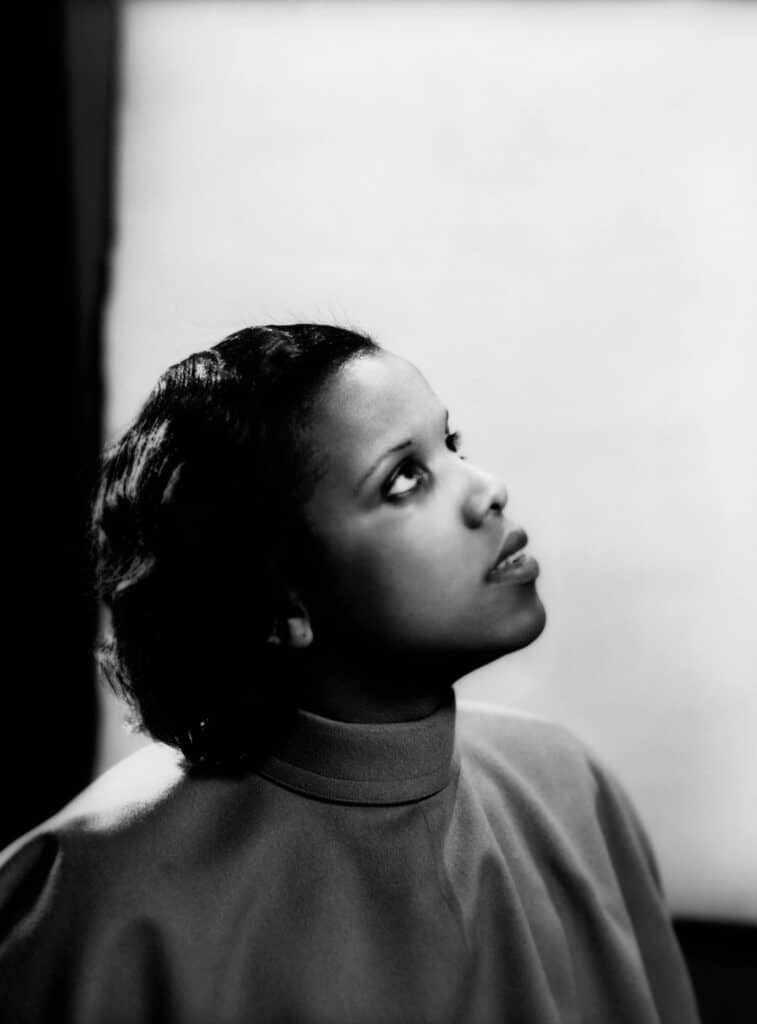
Most encounters, however, remain stopovers: Lee Miller would always break the rules and forge her own path. Her life was in constant flux: she created her own studio in New York; flew to Egypt with her husband du jour; settled in London where she had already met her future spouse, Roland Penrose, a British member of the Surrealist movement.
Then the war broke out. With the men leaving for the front, she was asked by Vogue UK to run the photographic studio before becoming, on her own initiative, a war photographer.
The exhibition space in Arles is divided into three adjoining rooms, each devoted to a period in Miller’s life, overlapping between portrait, fashion, and war. Some hundred prints from the Lee Miller Archives are accompanied by contact sheets, magazine spreads, letters, and press clippings, which help contextualize a complex body of work and offer an insight into Lee Miller’s personality.
“The idea is to present a groundbreaking exhibition that sheds light on her practice,” explains the curator Gaëlle Morel. “I want to situate Lee Miller in the context of photography, without reducing her to the role of a beautiful woman or Man Ray’s muse. I want to extract her from that story, which, although it lasted only three years, generated a false myth that Lee Miller would have been nothing without him. When she left Man Ray, her career took off all on its own. She was a proactive woman who knew how to provoke and seize opportunities.”

In conflict zones
The exhibition focuses on Miller’s most significant period, when she discovered her destiny. The curator has decided to forego certain emblematic photos which are not representative of her work.
For example, portraits with Pablo Picasso, solarizations, the severed breast from a radical mastectomy on a plate, or the portrait of her bathing in Hitler’s tub, taken after the Fuhrer’s suicide by Life photographer David Scherman, with whom she worked at the front in 1944–45. Although absent from the exhibition, these prints can be found in the archive.
“My intention is to refresh Miller’s iconography, to change the narrative and mythology, to show the profession she lived on,” explains Morel. “When the British government’s propaganda minister called on popular magazines to support the war effort, Vogue UK encouraged Lee Miller to leave the artificial setting of the studio in favor of more spontaneous shots.”
The photojournalist thus began to educate British women through images about the war and the impact it had on their lives. She captured the London Blitz, placing models in the midst of the ruins. “She contributed before her time to bringing fashion to the street,” notes Morel. “She benefited from army support, which gave her access to materials, film, and paper. There was a relationship of exchange.”
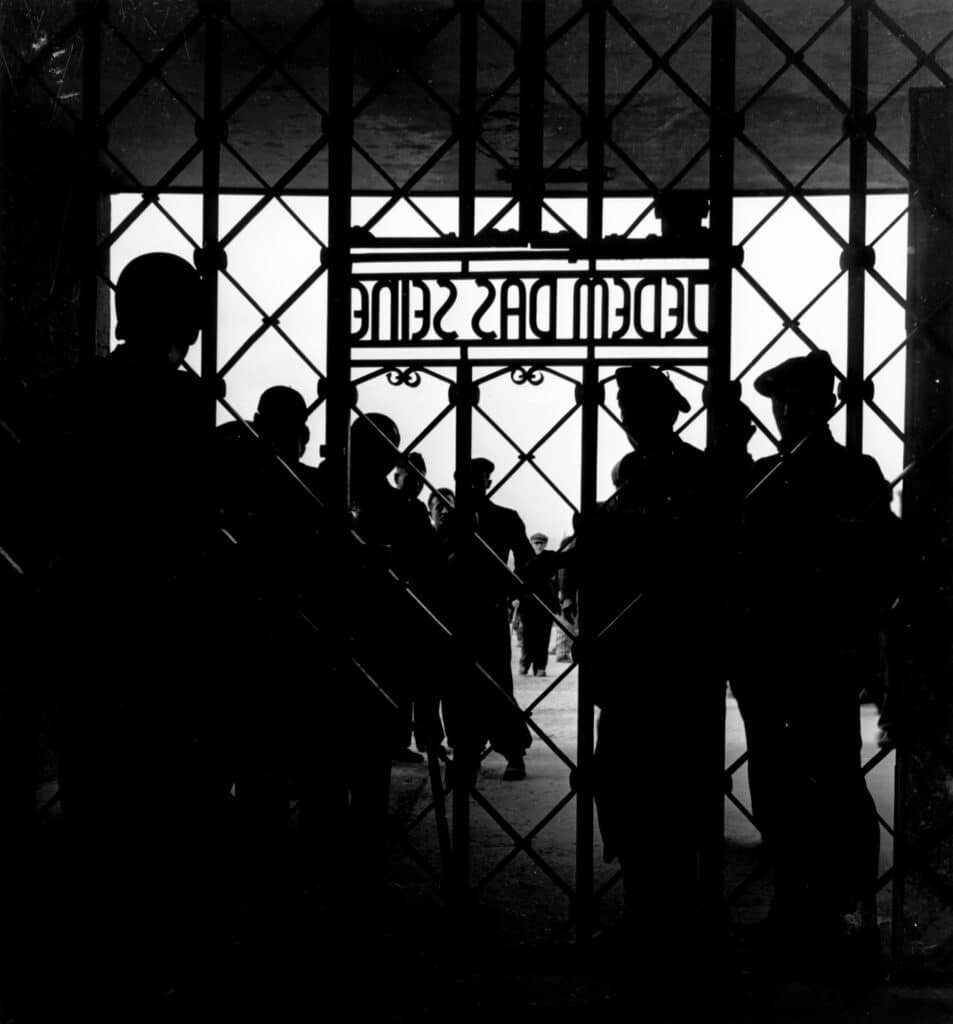
In 1941, she asked to join the American army as a war correspondent. She followed the Allied troops in Europe in a soldier’s uniform and photographed the battlefield in the aftermath of battles.
In Germany, she was on the ground when the army liberated the concentration camps in 1945. “From there, I switch around the two sections to remove any desire to aestheticize the documents that testify to the camps,” says the curator.
Lee Miller addressed head-on the liberation of the camps and the horror of Nazi crimes, bringing it into the public eye with poignant articles, such as “Germans Are Like This” or “Believe It.” “She possessed a skill that hasn’t been fully recognized: she was a great writer. Lee Miller could write copy and captions that allowed editors dispense with a reporter.”
Lee Miller: Facing the fear
Lee Miller’s particularity was to keep her camera to her cheek even as she uncovered the unimaginable, focusing on emaciated survivors and defeated executioners, such as the two guards begging for forgiveness, a kapo floating in the canal, women shorn for having relations with the Nazis, an SS officer hanged from a radiator, collaborators who committed suicide.
“Lee Miller was not so much interested in the spatial structure of the camps or the gas chambers, even if we can see the crematoria. Rather, she captured the living, like these women sex slaves, put in a brothel in the camp reserved for the guards, where they were raped,” adds Morel. “The photos show a group of women gathered in a room, but what Lee Miller says in her article is edifying.”
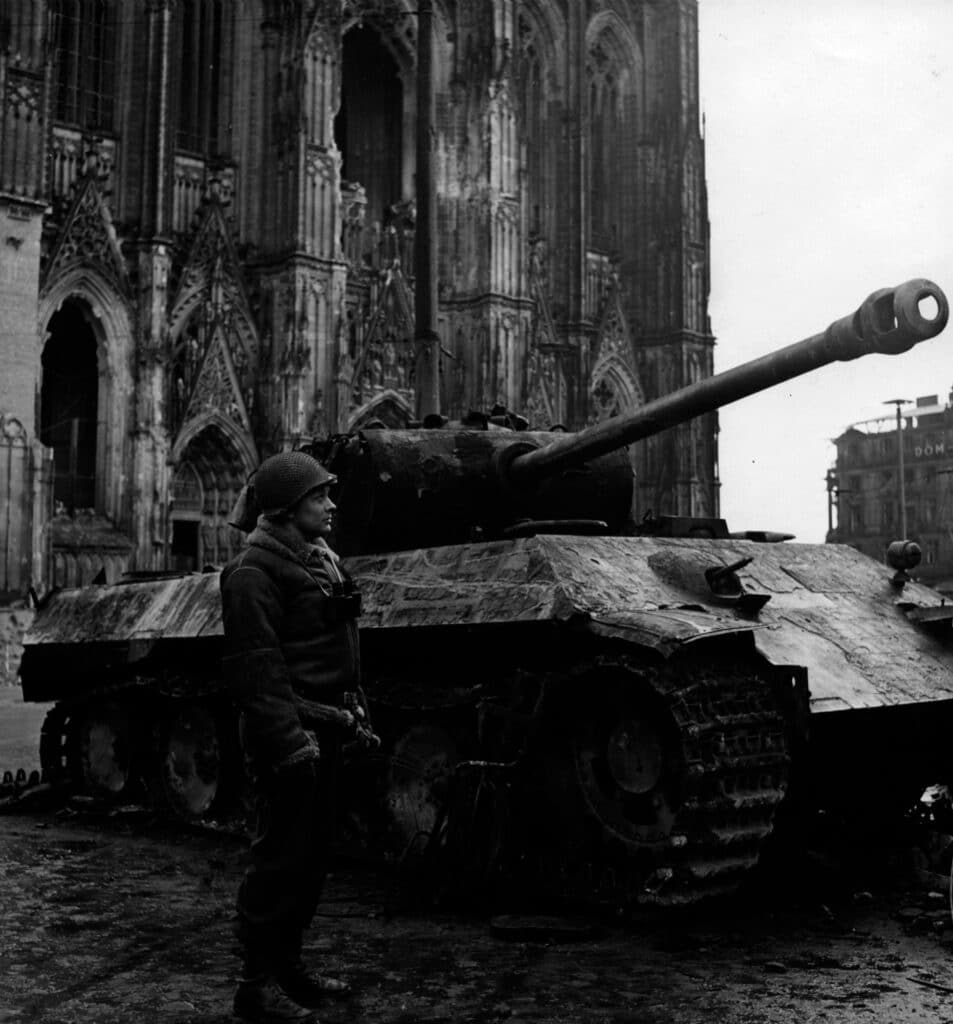
The exhibition stops before Miller descends into hell and abandons photography after the war. Settled at Farleys House in the English countryside with her husband and son, suffering from post-traumatic stress disorder and addicted to alcohol, Lee Miller found the strength to continue by plunging into the culinary art, her new passion.
She died in 1977, aged seventy. Her son Antony and granddaughter Amy have since worked to preserve the memory of this fascinating non-conformist and a woman who lived a free life.
Lee Miller, “Professional Photographer (1932 – 1945)“, at ARLES Les Rencontres de la Photographie, 34 Rue du Dr Fanton, 13200 Arles, from July 4 to September 25, 2022, from 10am to 7:30pm.
